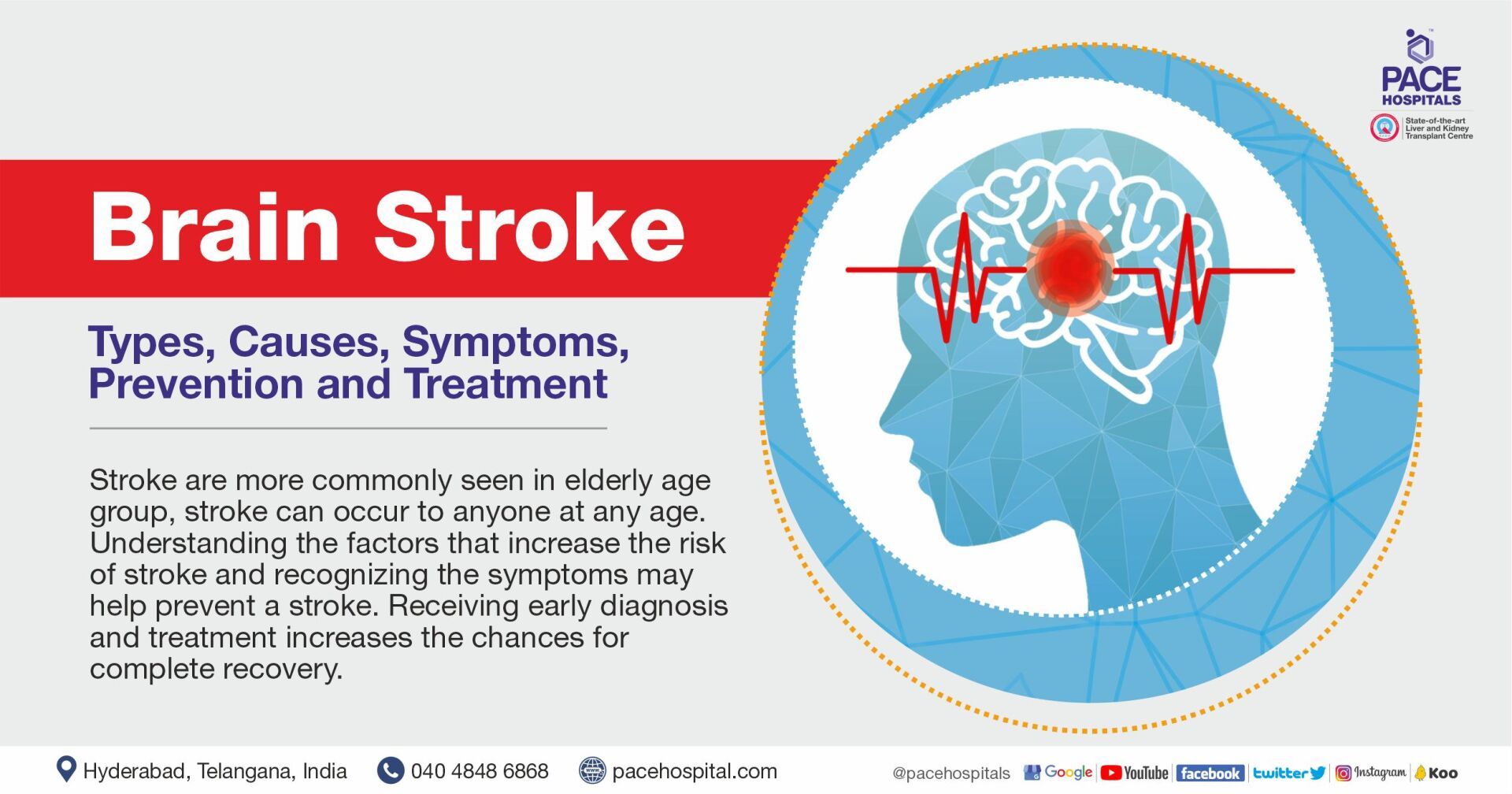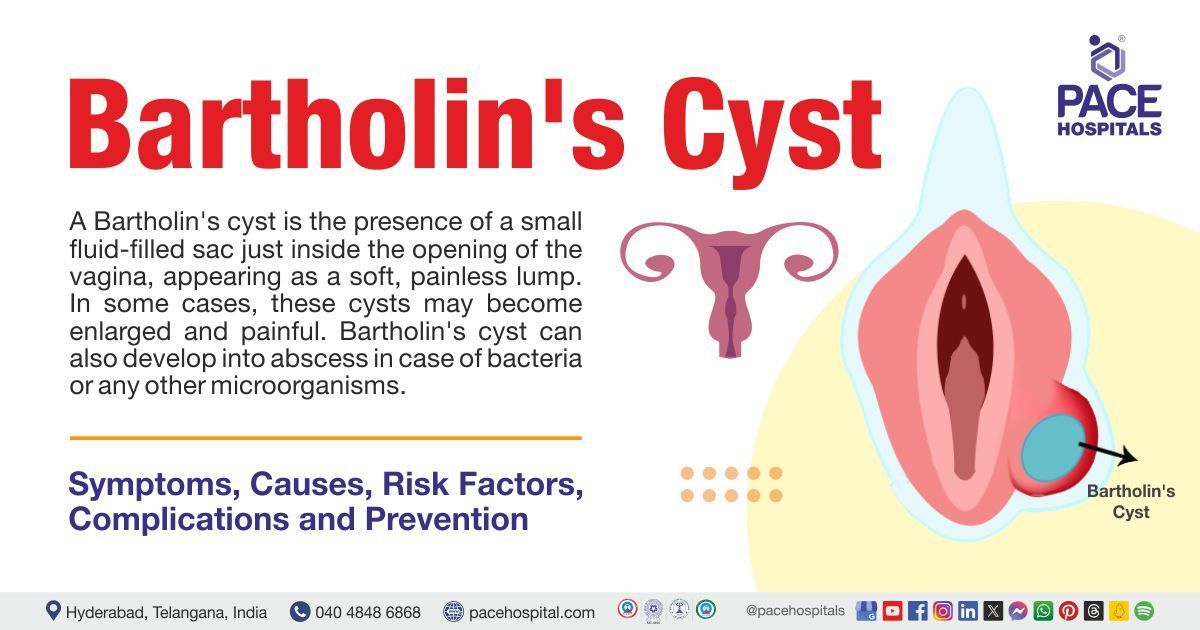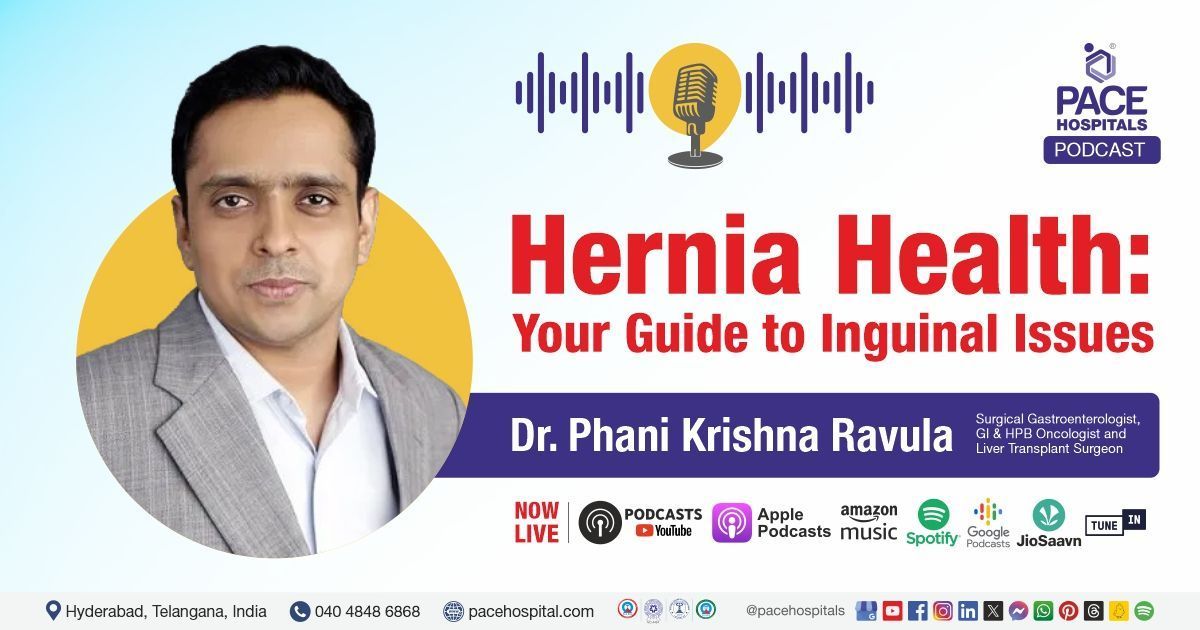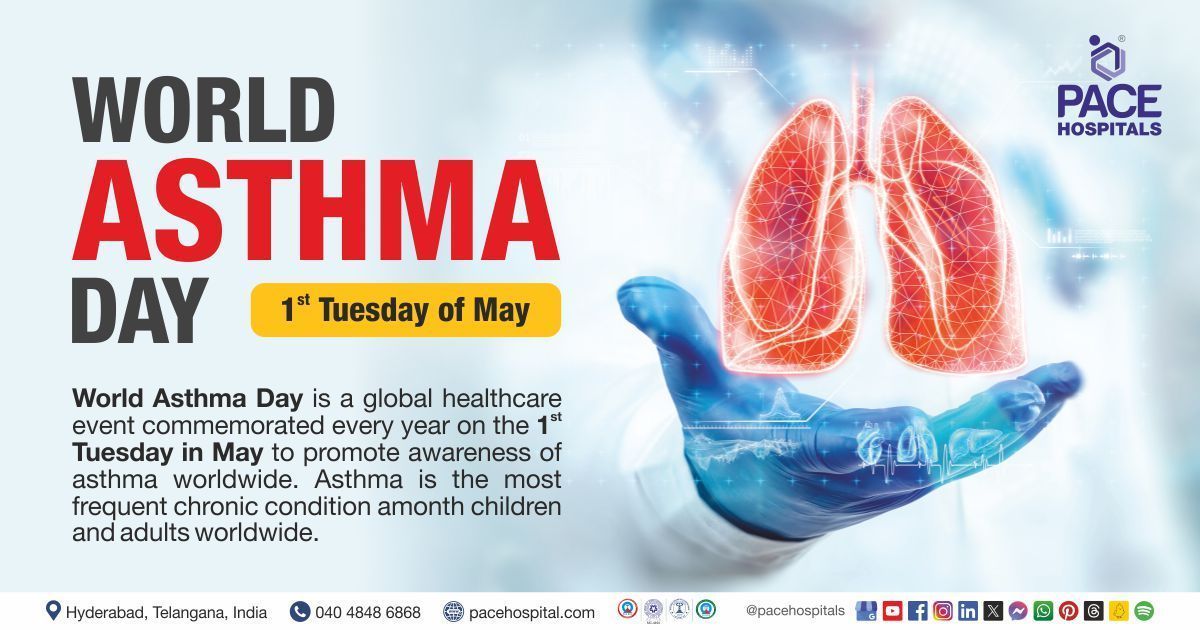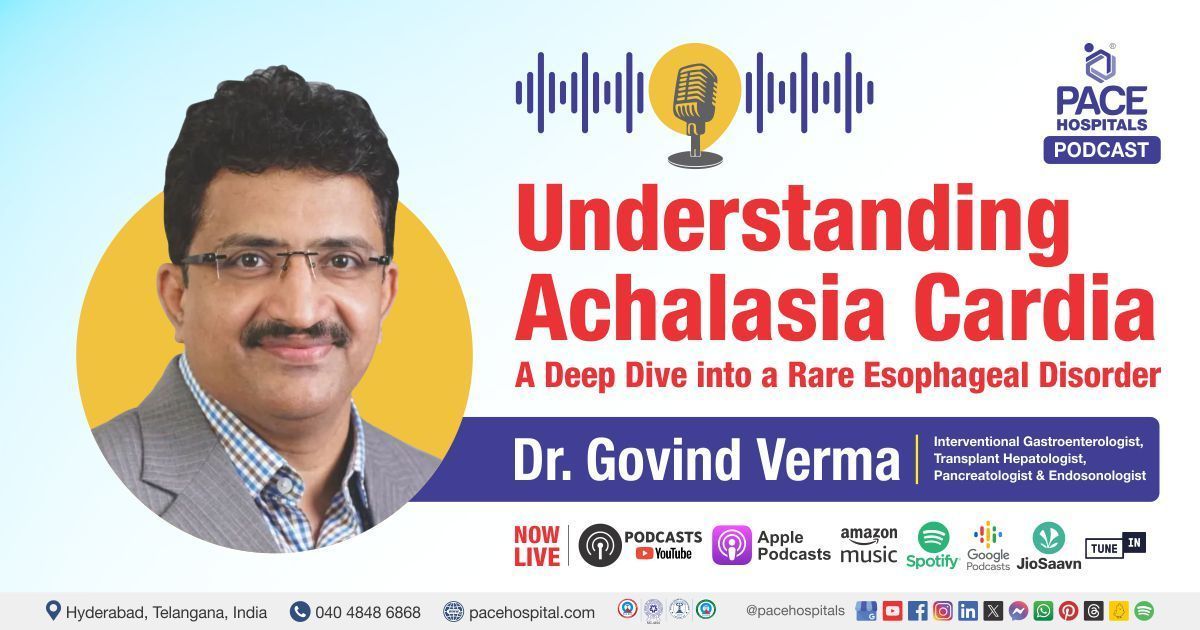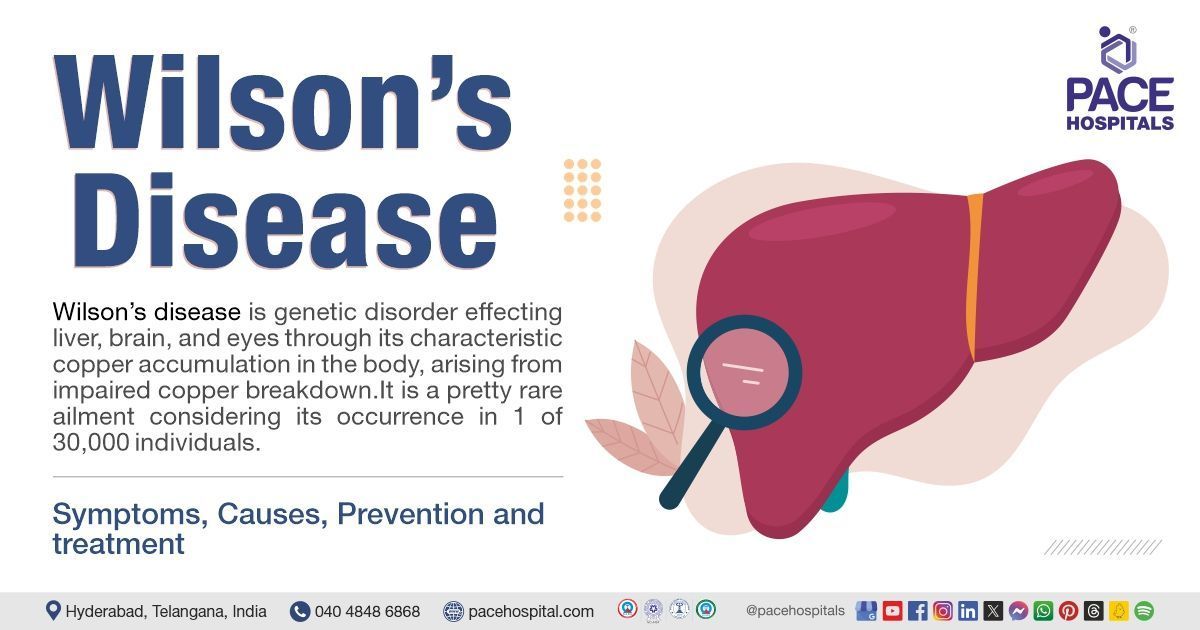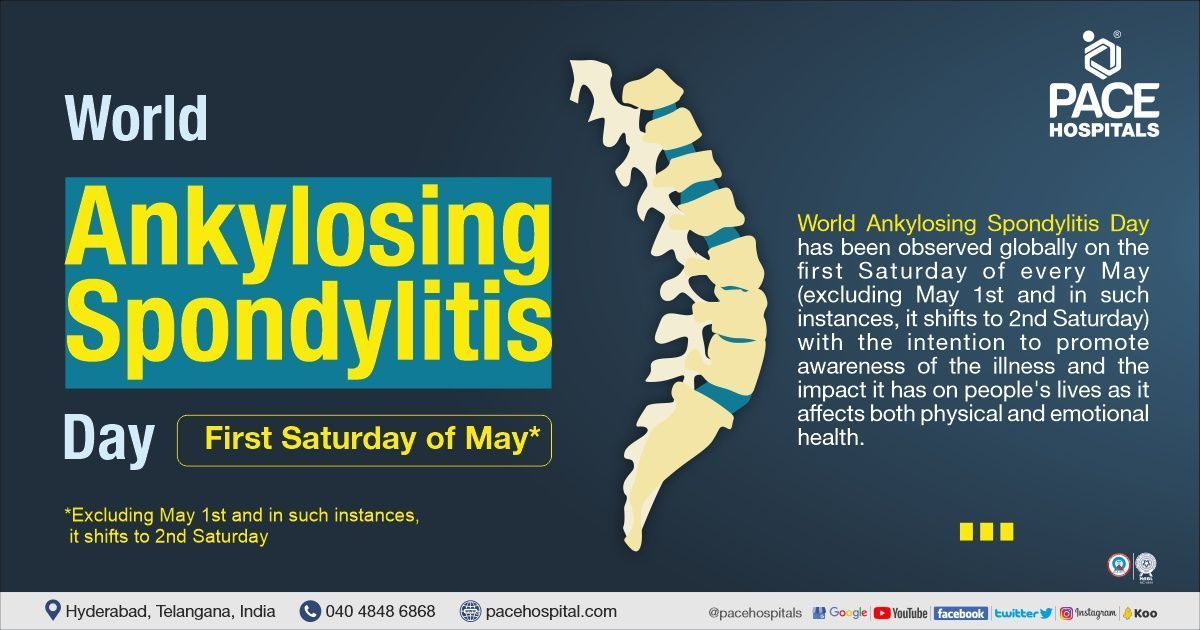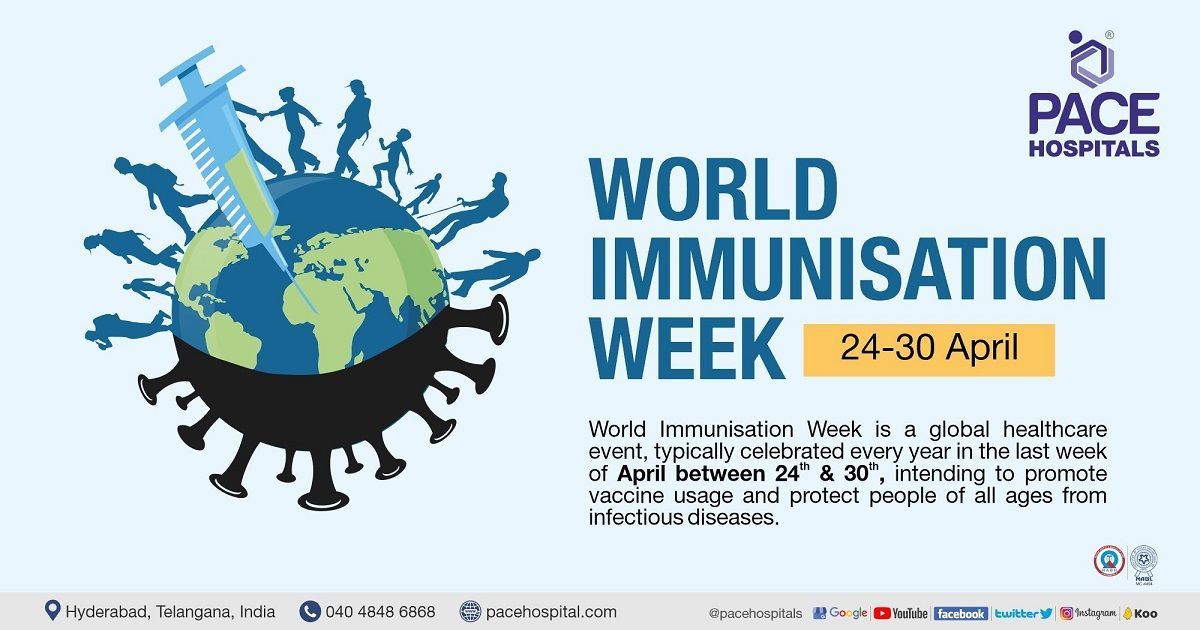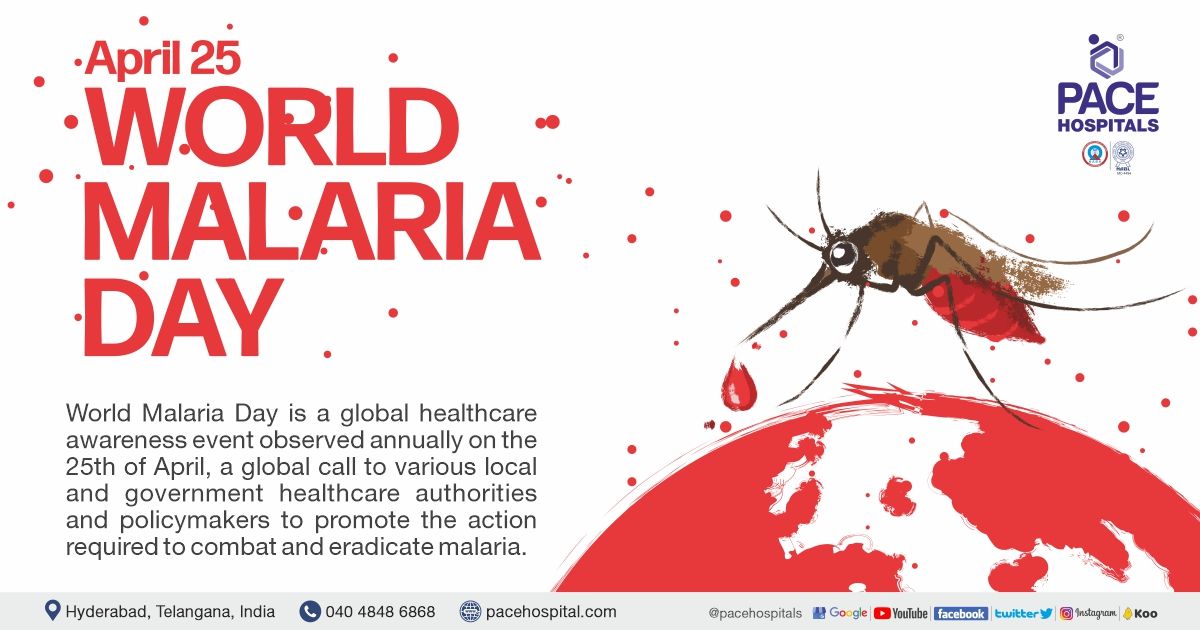Brain Stroke: Types, Causes, Symptoms, Prevention and Treatment
Worldwide, brain stroke is the second leading cause of death and third leading cause of disability and second leading cause of death. As per the recent data, in India, every 3 people suffer from brain stroke every minute.
In some cases, the warning signs of a stroke can be obvious, but what’s going on inside the body is incredibly complex. 80% of strokes are preventable. But once you’ve had a stroke, the chances you have another one are greater. Find out below more about brain stroke.
What is a brain stroke?
Brain stroke happens when there is a blockage in the blood circulation in the brain or when a blood vessel in the brain breaks and leaks. The burst or blockage prevents blood and oxygen reaching the brain tissue. Without oxygen the tissues and cells in the brain are damaged and die in no time leading to many symptoms.
Once brain cells die, they generally do not regenerate and devastating damage may occur, sometimes resulting in physical, cognitive and mental disabilities.It is crucial that proper blood flow and oxygen be restored to the brain as soon as possible.
Types of brain stroke
Brain stroke is mainly two types.
- Ischemic stroke: It is the most common type and contributes to 80% of brain strokes.
- Hemorrhagic stroke: It contributes to 20% of brain strokes.
Ischemic stroke can be either thrombotic or embolic.
- Thrombotic stroke is the most common type of ischemic stroke. A blood clot forms inside a diseased or damaged artery in the brain resulting from atherosclerosis (cholesterol containing deposits called plaque), blocking blood flow.
- Embolic stroke is caused when a clot or small piece of plaque formed in one of the arteries leading to the brain or in the heart, is pushed through the blood stream and lodges in narrower brain arteries. The blood supply is cut off from the brain due to the clogged vessel.
Haemorrhagic stroke can be due to Intracerebral haemorrhage or Subarachnoid haemorrhage.
- Intracerebral haemorrhage is the bleeding that occurs within the brain tissue, most common cause is due to changes in the arteries caused by long-term Hypertension.
- Subarachnoid haemorrhage is bleeding that occurs between the surface of the brain and skull. Common causes being cerebral aneurysm or arteriovenous malformation (AVM).
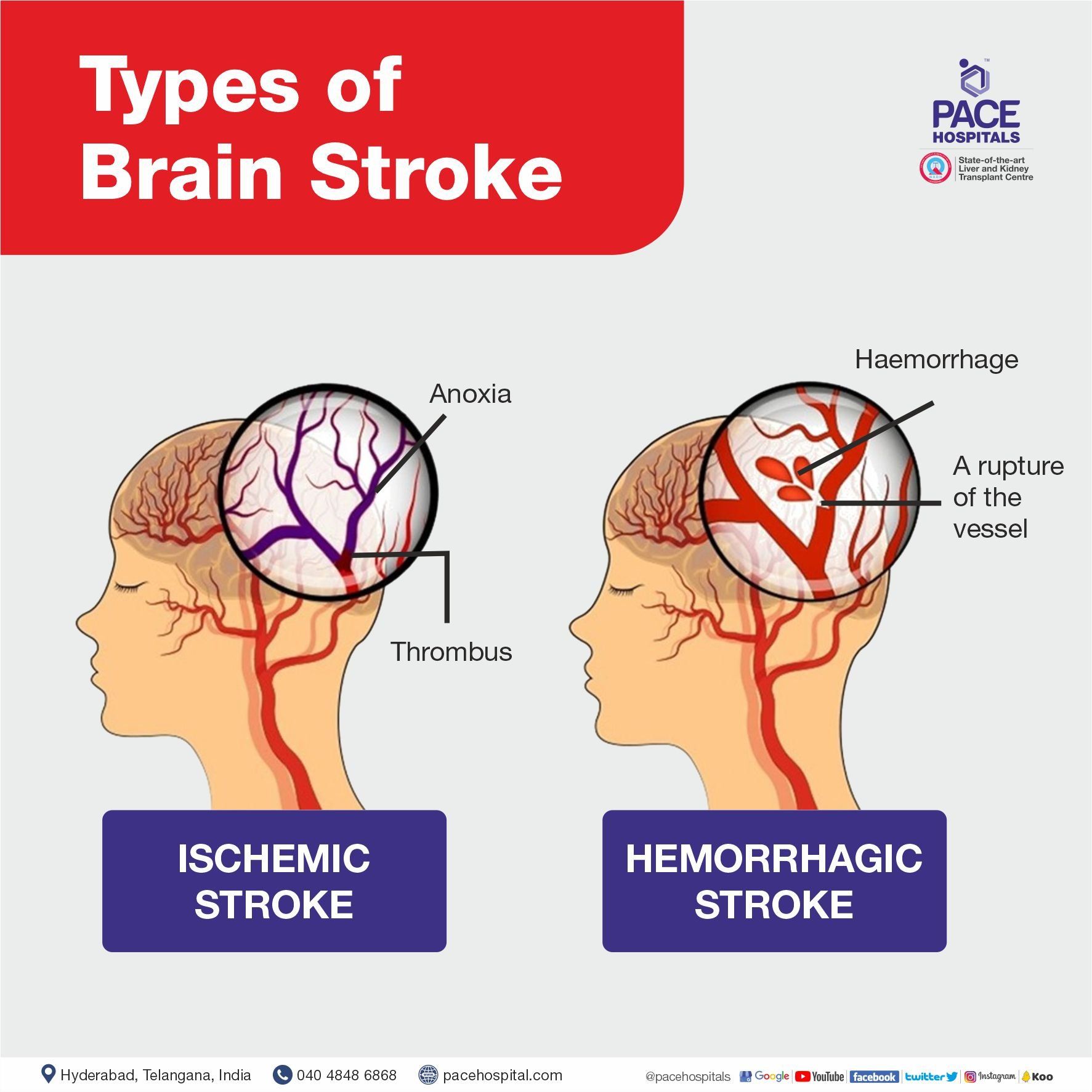
What is a transient ischemic attack (TIA)?
Transient ischemic attack is a warning sign of a possible future stroke and is treated as a neurological emergency.
Common temporary symptoms include difficulty speaking or understanding others, loss or blurring of vision in one eye and loss of strength or numbness in an arm or leg.
Usually these symptoms resolve in less than 10 to 20 minutes and almost always within one hour. Even if all the symptoms resolve, it is important that anyone experiencing these symptoms have to be immediately evaluated.
History of transient ischemic attack (TIAs): About 30 percent of strokes are preceded by one or more TIAs that can occur days, weeks or even months before a stroke.
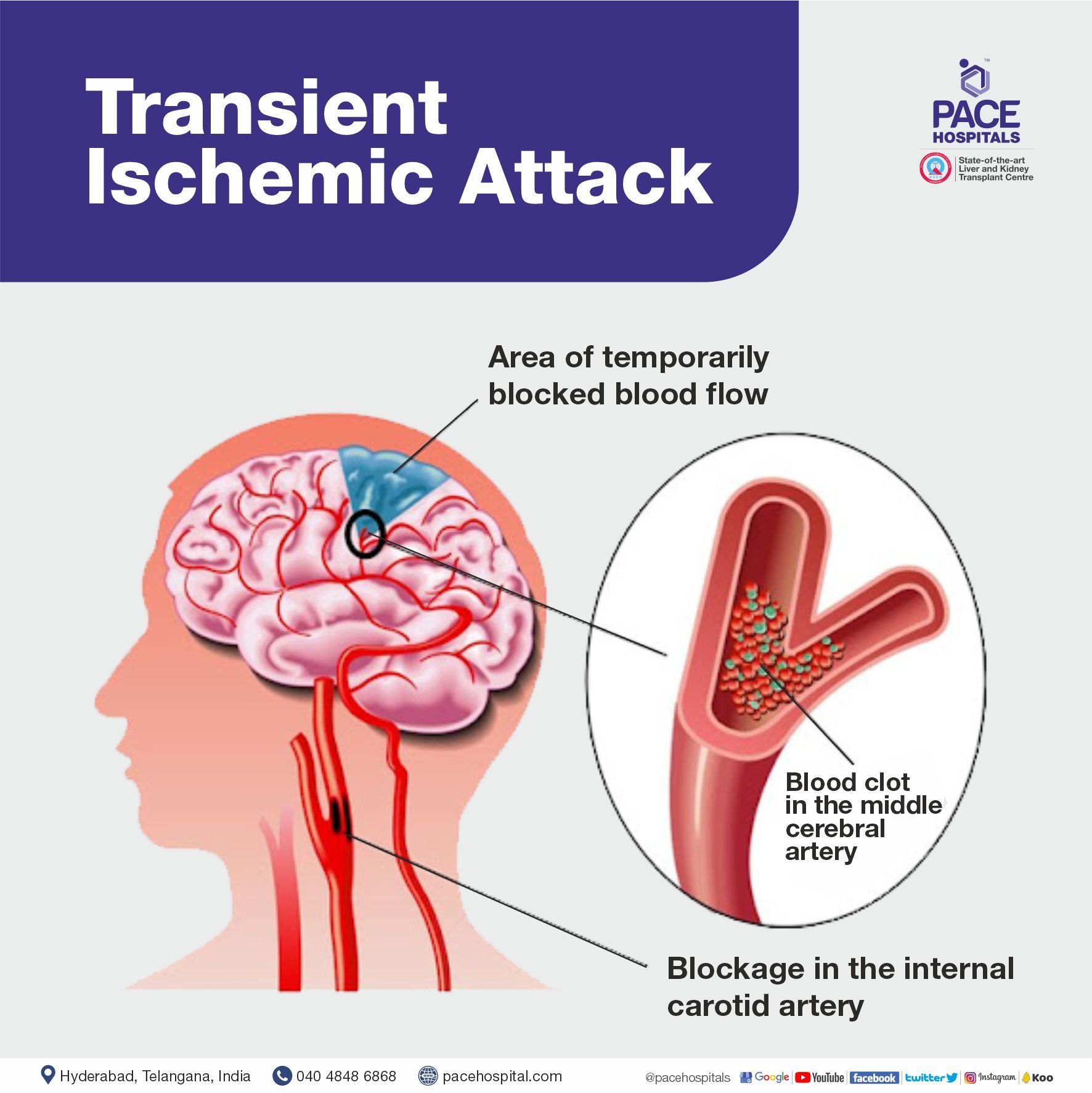
What are the symptoms of a brain stroke?
The range and severity of early stroke symptoms vary considerably, but they share the common characteristic symptom of sudden onset. Common signs and symptoms of a brain stroke include:
- Sudden numbness or weakness in the face, arm or leg, especially on one side of the body.
- Sudden confusion
- Trouble speaking
- Difficulty understanding speech
- Sudden trouble seeing in one or both eyes
- Sudden trouble walking, dizziness
- Loss of balance or lack of coordination
- Sudden severe headache with vomiting or unconsciousness
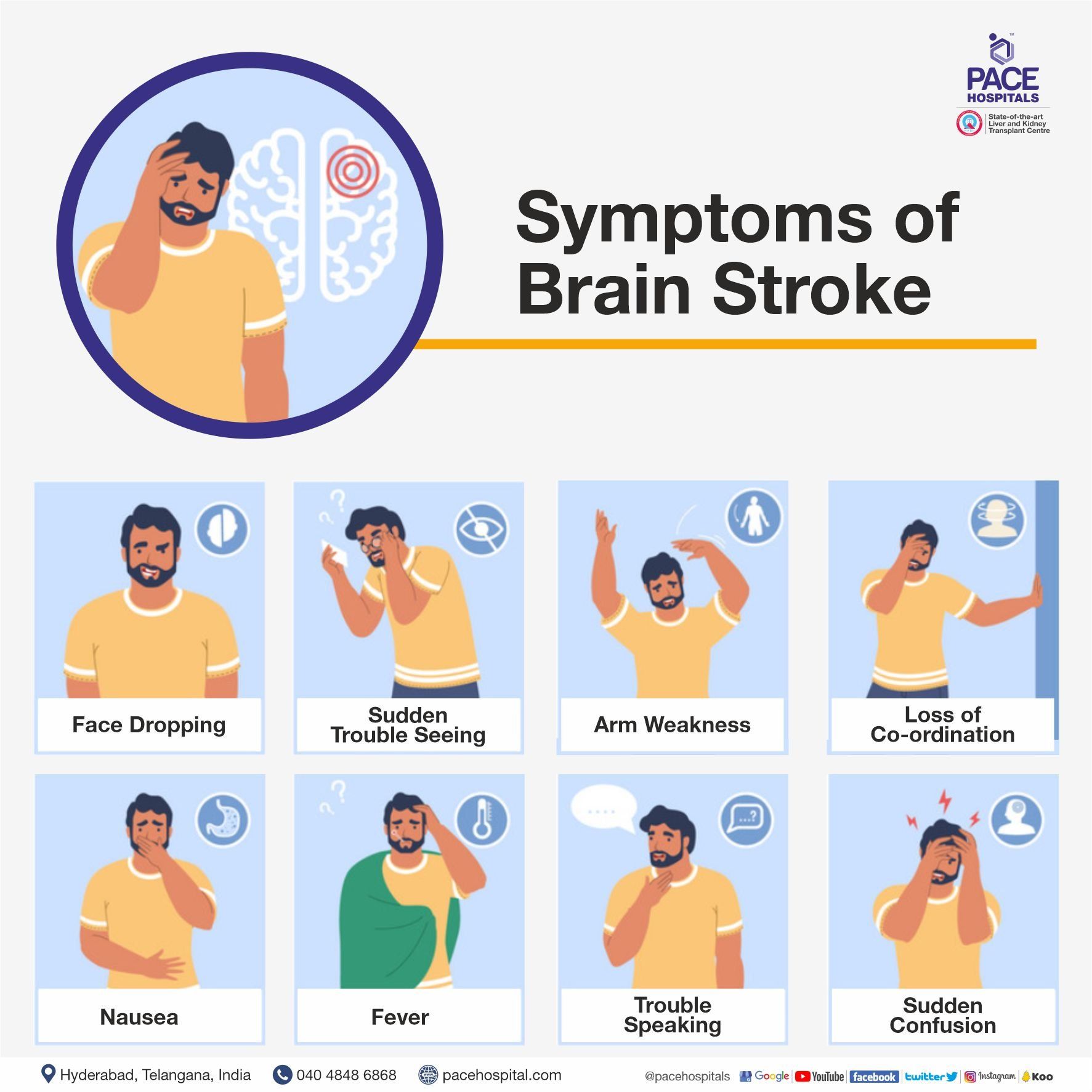
What are the risk factors causing brain stroke?
Although they are more commonly seen in the elderly age group, stroke can occur to anyone at any age. Understanding the factors that increase the risk of stroke and recognizing the symptoms may help prevent a stroke. Receiving early diagnosis and treatment increases the chances for complete recovery.
Risk factors can be categorized into modifiable and non-modifiable risk factors.
Modifiable risk factors:
Modifiable risk factors are controllable and treatable risk factors which include:
- Smoking: Smoking increases the risk of stroke. There is further increase in the risk of stroke when some form of oral contraceptives are used along with smoking. There is recent evidence that long-term second hand smoke exposure may increase the risk of stroke.
- High blood pressure: Blood pressure of 140/90 mm Hg is the most important risk factor for stroke.
- Carotid or other artery disease: The carotid arteries in the neck supply blood to the brain. A carotid artery narrowed by fatty deposits from atherosclerosis become blocked by a blood clot.
- Diabetes: Diabetes, especially when untreated, puts it at greater risk of stroke and has many other serious health implications.
- High blood cholesterol: A high level of total cholesterol (240 mg/dL or higher), high levels of LDL(bad) cholesterol (greater than 100 mg/dL) and high levels of triglycerides (blood fats,150 mg/dl or higher) and low levels of HDL (good) cholesterol (less than 40 mg/dl) may increase the risk of stroke.
- Physical inactivity and obesity: Being inactive, obese or both can increase the risk of high blood pressure, high blood cholesterol, diabetes, heart disease and stroke.
- Cardiac diseases like AF (atrial fibrillation) and others, large vessel and small vessel disease, increase the risk of ischemic stroke.
Non-modifiable or Uncontrollable risk factors:
Non-modifiable or Uncontrollable risk factors include:
- Age: People of all ages, including children, have strokes. But older the age, greater is the risk.
- Gender: Stroke is more common in men than in women. However, women account for more than half of all stroke deaths. Post-menopausal women have similar risk as men.
- Family history and certain genetic disorders increase the risk of stroke.
- History of previous stroke increases the chances of recurrent stroke.
- Other risk factors like Hyperhomocystenemia, sleep related disorders like OSA, few infections (Covid being in recent times), history of TIAs also increase the risk of stroke.
When to call emergency?
TIME IS BRAIN. WITH A STROKE TIME LOST IS BRAIN LOST.
The estimated pace of neurons lost in acute ischemic stroke per minute is 1.9 million neurons, per hour is 120 million and per stroke around 1.2 billion cells are lost. This is the reason for early identification of stroke symptoms and early intervention to prevent long-term disability.
Act FAST at the first sign of stroke. We can use these letters F.A.S.T. to spot the signs of stroke and know when to call emergency.
F: Facial weakness
A: Arm weakness
S: Speech difficulty
T: Time to call emergency
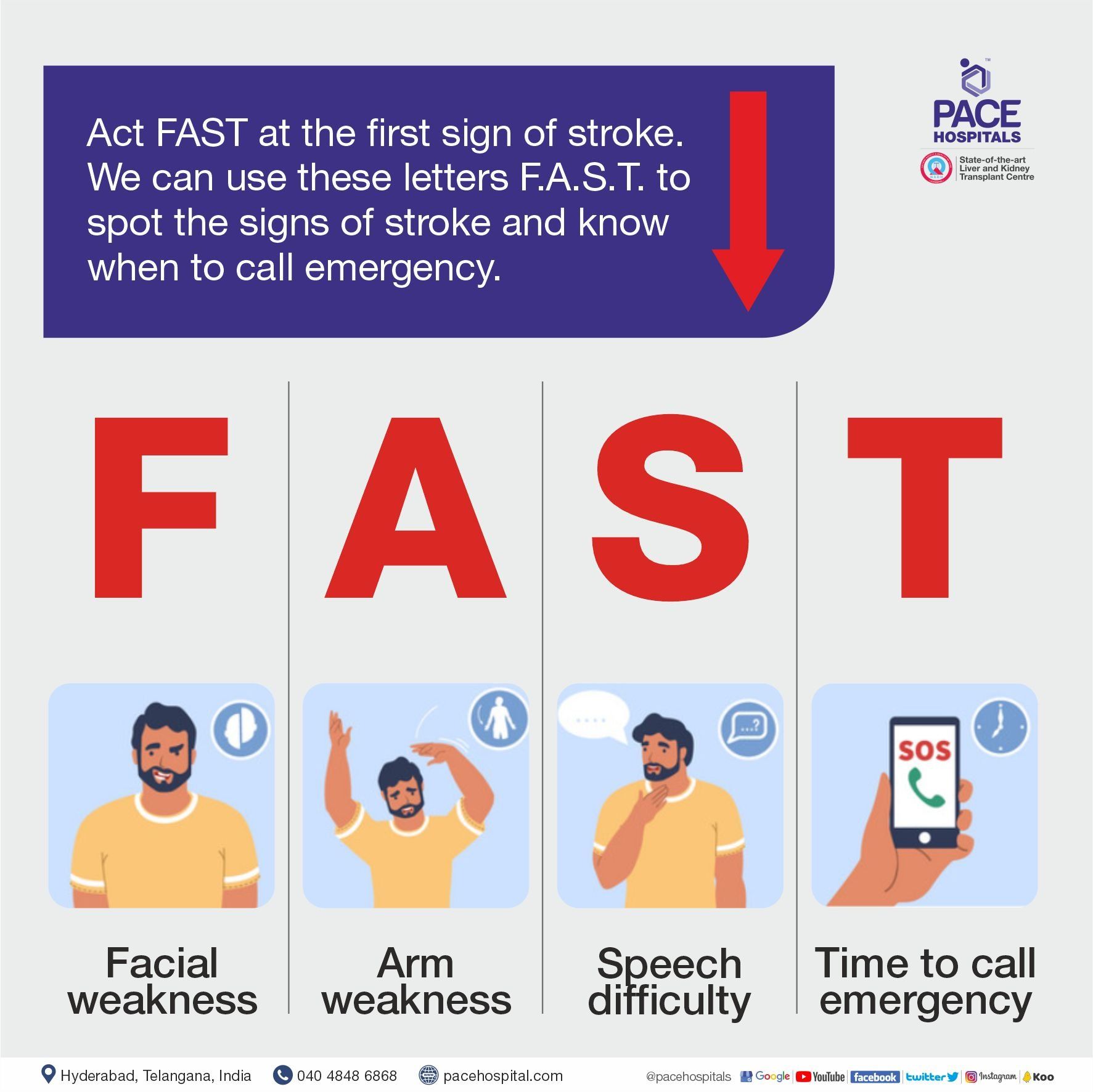
What are the treatment options available for stroke?
Stroke patients treated with clot bursting agents like alteplase and tenecteplace within 90 minutes of their symptoms are 3 times more likely to recover with little or no disability. In some cases, a procedure to remove the clot is also recommended. Ninety-one percent of stroke patients who were treated with a stent retriever within 150 mins of first symptoms recovered with little or no disability.
Acute treatment options for ischemic stroke include Reperfusion therapies like Thrombolytic therapy, Endovascular therapy.
Preventive surgical therapies are indicated in patients developing strokes due to block in the vessels in the neck carotid arteries. Carotid endarterectomy and Carotid Angioplasty and Stenting are the procedures used to treat carotid vessel disease.
Request an appointment
Fill in the appointment form or call us instantly to book a confirmed appointment with our super specialist at 04048486868
Appointment request - health articles
Thank you for contacting us. We will get back to you as soon as possible. Kindly save these contact details in your contacts to receive calls and messages:-
Appointment Desk: 04048486868
Whatsapp: 8977889778
Regards,
Pace Hospitals
Hitech City and Madinaguda
Hyderabad, Telangana, India.
Oops, there was an error sending your message. Please try again later. We will get back to you as soon as possible. Kindly save these contact details in your contacts to receive calls and messages:-
Appointment Desk: 04048486868
Whatsapp: 8977889778
Regards,
Pace Hospitals
Hitech City and Madinaguda
Hyderabad, Telangana, India.
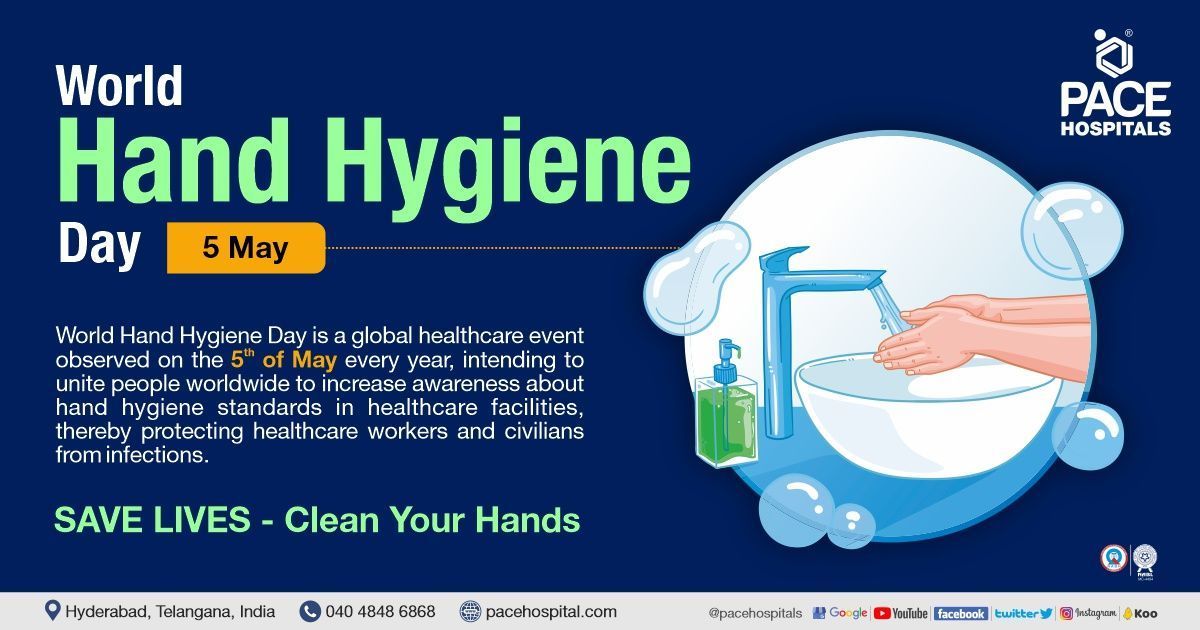
Our Locations
Subscribe to our newsletter and stay updated with the latest health information.
By clicking on subscribe now, you accept to receive communications from PACE Hospitals on email, SMS and Whatsapp.
Subscribe to PACE Hospitals News
Thank you for subscribing. Stay updated with the latest health information.
Oops, there was an error. Please try again submitting your details.
-

Payment in advance for treatment (Pay in Indian Rupees)
For Bank Transfer:-
Bank Name: HDFC
Company Name: Pace Hospitals
A/c No.50200028705218
IFSC Code: HDFC0000545
Bank Name: STATE BANK OF INDIA
Company Name: Pace Hospitals
A/c No.62206858997
IFSC Code: SBIN0020299
Scan QR Code by Any Payment App (GPay, Paytm, Phonepe, BHIM, Bank Apps, Amazon, Airtel, Truecaller, Idea, Whatsapp etc)
Call us at 04048486868
ADDRESS
PACE Hospitals
Hitech City : Beside Avasa Hotel, Pillar No. 18, Hyderabad - 500081
Madinaguda: Mythri Nagar, Beside South India Shopping, Madinaguda, Hyderabad - 500050
QUICK LINKS
Disclaimer
General information on healthcare issues is made available by PACE Hospitals through this website (www.pacehospital.com), as well as its other websites and branded social media pages. The text, videos, illustrations, photographs, quoted information, and other materials found on these websites (here by collectively referred to as "Content") are offered for informational purposes only and is neither exhaustive nor complete. Prior to forming a decision in regard to your health, consult your doctor or any another healthcare professional. PACE Hospitals does not have an obligation to update or modify the "Content" or to explain or resolve any inconsistencies therein.
The "Content" from the website of PACE Hospitals or from its branded social media pages might include any adult explicit "Content" which is deemed exclusively medical or health-related and not otherwise. Publishing material or making references to specific sources, such as to any particular therapies, goods, drugs, practises, doctors, nurses, other healthcare professionals, diagnoses or procedures is done purely for informational purposes and does not reflect any endorsement by PACE Hospitals as such.

